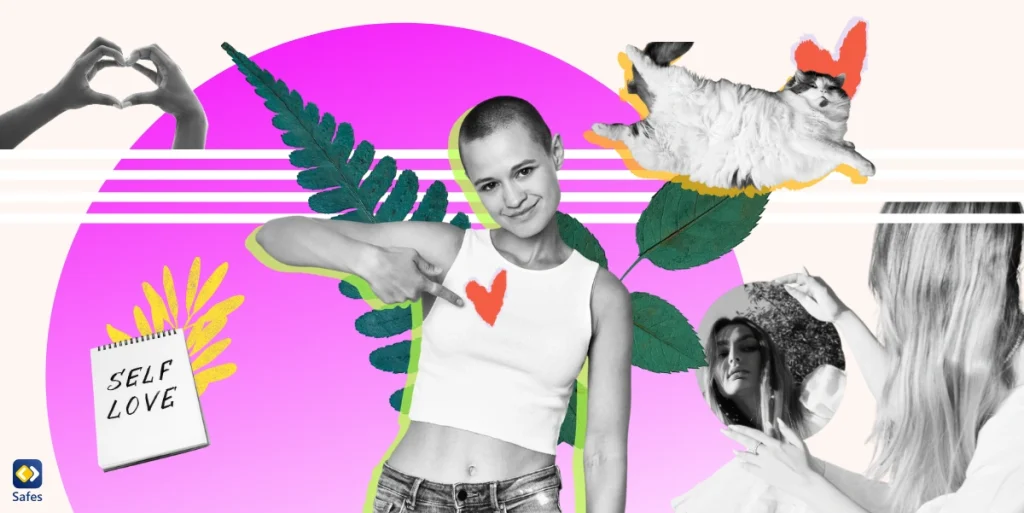In the era of instant connectivity, the quest for self-worth often intertwines with the perceptions we absorb from the digital world around us. Central to this discourse is the body positivity movement, heralded for its revolutionary take on self-love and acceptance. However, like many well-intentioned initiatives, it’s not without its critiques. Some argue that in certain contexts, body positivity is toxic, creating an illusionary ideal that might mask underlying concerns. This post dives into the body positivity movement, its potential pitfalls, and the digital influencers at play, ultimately guiding parents on how to navigate this complex terrain with their children.
Download and Start Your Free Trial of the Safes Parental Control App
Introduction to Body Positivity: Embracing Every Inch
It is important to stand back and reconsider what beauty actually entails in a world where we are constantly exposed to pictures of “ideal” bodies. Let’s introduce the notion of body positivity, a social movement founded on the conviction that every body is deserving of love and acceptance regardless of its size, shape, or appearance. Its goal is to acknowledge the intrinsic worth in every body type rather than elevating particular body types.
The core principles of body positivity emphasize self-acceptance and challenge conventional beauty standards. Instead of confining ourselves to narrow ideals, this movement promotes a more inclusive view of beauty. Celebrating the vast diversity of human bodies, it encourages individuals to see worth in themselves, regardless of societal expectations.
Embracing body positivity has profound implications for self-esteem and mental health. According to WebMD, studies suggest that when we shed unrealistic expectations and learn to accept ourselves, our mental well-being improves. The feeling of constantly trying to measure up dissipates, replaced by a more wholesome self-view. By promoting self-love, body positivity nurtures a healthier mindset, creating a foundation for lasting self-worth and happiness.

The Dangers of Extremes: Is the Body Positivity Movement Harmful?
As empowering as the body positivity movement is, like all things, it can be taken to unhealthy extremes. Enter the shadowy side: toxic body positivity. This term refers to an overly rosy or excessive encouragement that sometimes ignores the nuances of individual experiences, leading to feelings of guilt or inadequacy if one doesn’t always feel positive about their body.
The Conversation reports that a study comparing women who watched a program about fashion models to those who watched a lifestyle television series advocating body acceptance revealed that the former group saw comparable increases in anxiety and unhappiness with their bodies. This demonstrates how occasionally well-meaning endeavors can have unanticipated detrimental repercussions on people. Moreover, the broader landscape of digital media has other pitfalls, including the negative effects of social media on physical health, which parents should be aware of.
For example, someone struggling with health issues related to their weight might feel pressured to only express love and acceptance for their body, even if they have valid concerns. Some critics ask, ‘Does body positivity promote obesity?’ While the intention is self-acceptance, it’s vital not to confuse this with ignoring genuine health risks. Similarly, someone undergoing body changes, like post-surgery scars, might be compelled to immediately embrace these changes without giving themselves the time to process and adjust.
While it’s crucial to champion self-love, it’s equally important to acknowledge that everyone has their journey. Emotions like frustration or sadness about one’s body are natural and valid. By pushing an unrealistic standard of always being positive, we risk alienating those who are in genuine turmoil.

The Parenting Challenge: Balancing Realism and Body Positivity
In the digital age, parents are met with a mosaic of beauty standards, often contrasting, from social media feeds to personal experiences. As they navigate their relationship with body image, they’re also tasked with guiding their children through these tumultuous waters.
Promoting body positivity to children is a noble endeavor. However, intertwined with this is the responsibility to ensure they’re grounded in reality. This balance is crucial. As much as we want our kids to love who they are, it’s just as important to support positive body image. However, there’s a line where body positivity can be toxic, particularly if it causes one to disregard one’s physical well-being. Parents need to make sure their kids know how important self-care, fitness, and health are. Understanding BMI for kids is one method parents may monitor their child’s health, but it’s important to use this thoughtfully.
Here are some practical steps parents can consider:
- Open Dialogue: Encourage open conversations about body image. Ask them how they feel about what they see on social media or in magazines and provide context if needed.
- Diverse Exposure: Introduce them to diverse beauty standards, emphasizing that beauty exists in many forms.
- Encourage Active Lifestyles: Promote activities that make them feel good about their bodies, focusing on strength and capability rather than appearance.
- Limit Media Intake: Moderation is key. Ensure that their media consumption is balanced with real-world experiences and interactions.
- Lead by Example: Children often mirror the attitudes of their primary role models. By practicing self-acceptance and portraying a balanced view of body image, parents can effectively lay a foundation for their children to do the same.
Technology’s Influence on Body Image and the Role of Parental Control Apps
In today’s digital age, our children are constantly immersed in a world of shifting beauty standards, presented through social media platforms and various online content. While these platforms can offer positive connections and inspirations, they also have the potential to shape skewed perceptions of beauty and body image, sometimes detrimentally so. Moreover, these platforms can sometimes contribute to the sexualization of children, an alarming trend that parents should be aware of.
Amidst this backdrop, parental control apps such as Safes emerge as an essential tool for parents. With Safes, parents don’t merely set time limits on electronic device usage or video game playtimes. The true magic lies in its deeper protective layers. Safes allows parents to keep a vigilant eye on social media interactions, ensuring that children are not unduly influenced by unrealistic beauty standards or harmful content. Parents are notified if a child encounters potentially inappropriate material, allowing for timely interventions.
Furthermore, Safes gives parents the ability to shape and tailor the online content their children consume. From filtering out undesirable search results on popular search engines to handpicking content on web platforms, parents are equipped to provide a safer browsing environment. Additionally, any unsuitable online games or apps can be blocked, ensuring that your child’s digital engagements remain healthy and constructive.
To truly safeguard our children in this digital age, it’s essential to combine open dialogue with technological assistance. Start your child’s protected online journey today with Safes. Your peace of mind is just a download away. You can download Safes for iOS and Android. Sign up for a 2-week free trial of Safes and explore features like keyword filtering and screen time management to promote a healthy digital space.

Conclusion
The nuances of body positivity and its potential extremes underscore the need for a balanced approach to self-image in today’s digital world. As parents, understanding the delicate balance between promoting self-love and recognizing genuine health concerns becomes paramount. By fostering open dialogues, setting realistic expectations, and leveraging tools like Safes, parents can ensure that their children foster a healthy self-image. It’s not just about rejecting or embracing the claim that “body positivity is toxic,” but rather understanding its multifaceted implications in the broader spectrum of self-worth and identity.
Your Child’s Online Safety Starts Here
Every parent today needs a solution to manage screen time and keep their child safe online.
Without the right tools, digital risks and excessive screen time can impact children's well-being. Safes helps parents set healthy boundaries, monitor activity, and protect kids from online dangers—all with an easy-to-use app.
Take control of your child’s digital world. Learn more about Safes or download the app to start your free trial today!




